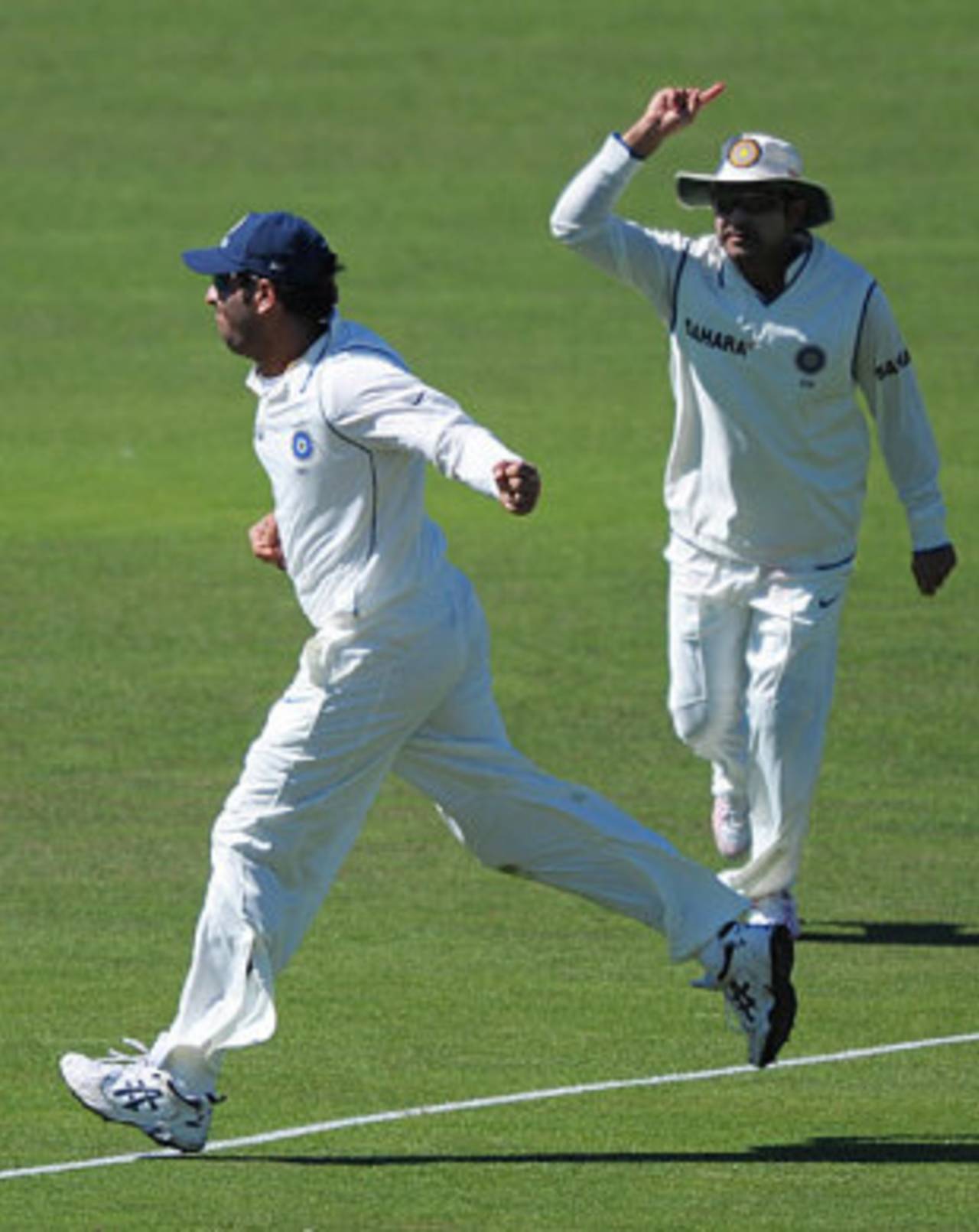Let down by fielding and intensity
This Indian team has taken giant strides over the last year and a half, but when the pitch is flat, and when the batsmen are hard to dislodge, they seem to switch off
Sidharth Monga in Napier
27-Mar-2009

Opportunities for celebration were few and far between for the Indians on the second day • AFP
Just two days after they were expected to sail through the series, the Indian team has hit rough waters. Criticisms over defensive captaincy, poor approach in the field, and lackadaisical attitude in preparations - they arrived in Napier half a day before the Test started - have already started pouring in.
Seventy-nine for 3 in reply to 619 for 9 reads worse than it actually is, but New Zealand, too, were 23 for 3 at one stage, and one partnership changed the whole script of the game. These are cruel conditions for bowlers, or so say the Indians. The surface is as flat as a road, the outfield is fast, the square boundaries are short, and Jesse Ryder is in imperious form. Like Virender Sehwag said yesterday, there aren't many ways to stop a batsman once a partnership gets going, as the Indians found out when Ryder and Ross Taylor got into their strides.
The two top-order wickets that India lost today were the results of tired shots, from men who had spent 155 overs in the field. However, it could be a tough task for New Zealand tomorrow if a couple of batsmen get stuck in and build a partnership. Zaheer Khan, who bowled 34 overs for three wickets, didn't have words that will encourage the New Zealand fast bowers. "We've given it everything we've got, as a bowling unit we've tried everything," Zaheer said. "Lot of runs have been scored in boundaries, and it is difficult to stop boundaries. It's frustrating for the fast bowlers."
Zaheer did give it his all with the new ball, often beating the bat and missing the outside edge narrowly. Ishant Sharma kept running in hard through the day. Munaf Patel looked uninspired, but his looks don't count for much. Harbhajan Singh lacked in variations, but not in effort. The bowlers' intensity flagged only after lunch, when the ball lost its shine, and it seemed India had resigned themselves to their fate and were waiting for the declaration.
The bowlers deserve the benefit of doubt, but where the Indians let themselves down badly was in the field. On such a beautiful batting pitch where wicket-taking opportunities were always likely to be rare, it was imperative that India took every chance that came their way. Instead, India's slip fielding was well below par.
An injured finger kept Sachin Tendulkar away from the slip cordon, but Yuvraj Singh, who took his place, could have made it 31 for 4 with a sharp chance, and later he dropped James Franklin when India were sensing a comeback late on the first day. Rahul Dravid missed a tough one - he would back himself to take about 50% of such catches - just before Ross Taylor had reached his century, and Taylor punished India for that reprieve.
This Indian team has taken giant strides over the last year and a half, but there is one criticism they haven't completely wiped off. When the pitch is flat, when the batsmen are hard to dislodge, they seem to switch off, and lack the discipline to make run-scoring difficult for the batsmen.
It was seen not long ago, in Delhi against Australia, coming on the back of a thoroughly comprehensive win in Mohali. When Australia started getting partnerships there, India's intensity dropped a few notches, catches were dropped, and the pressure was eased. Sometimes it is that discipline and hunger that separates a very good side from a great one, and India, admittedly in difficult conditions, were found wanting today.
Sidharth Monga is a staff writer at Cricinfo